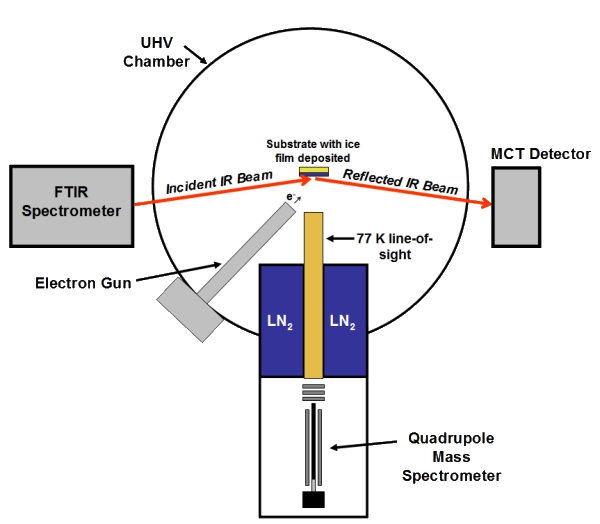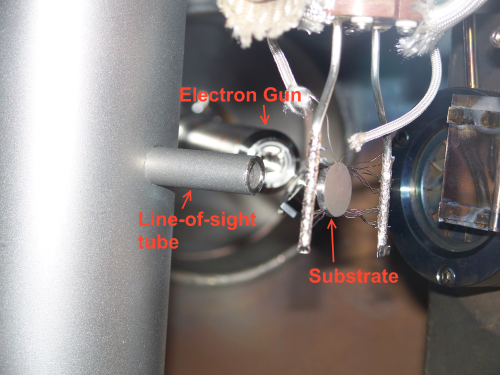|
Electron Stimulated Processes in Interstellar Ices
As well as photons, low energy electrons are another chemically inportant source of energy in the interstellar medium. These are commonly secondary electrons released during processes involving more energetic sources such as cosmic rays. These secondary electrons often have energies of up to a few tens of eV, which makes them comparable to UV photons. The aim of this research is to study the chemical and physical processes that can be stimulated by irradiating model interstellar ices with a beam of low energy electrons. The UHV chamber has been recently equipped with a low energy electron gun, capable of providing a beam of electrons with energies of up to 2 keV. The experimental arrangement is shown in Figure 1.

Figure 1. The experimental arrangement employed to study low energy electron stimulated processes
Temperature Programmed Desorption (TPD) and Reflection-Absorption Infrared Spectroscopy (RAIRS) will be used to determine the products of any reactions and any physical changes in the ice film. As well as identifying reaction products remaining in the ice following irradiation, the Quadrupole Mass Spectrometer (QMS) can also be used to identify those that desorb during irradiation. This technique can also be used to detect the electron stimulated desorption (ESD) of molecules and fragments from the initial ice system.
Electron stimulated desorption experiments will also be used to study the Water/Benzene ice system. These experiments are in parallel to those conducted at the Rutherford Appleton Laboratory, where the photon stimulated desorption of Water and Benzene from this system have been studied. Details of this work are available here.

Figure 2. Experimental arrangement in the "Beam" chamber showing electron gun, substrate and line-of-sight to the mass spectrometer.
|
|


